Digital television transition
The digital television transition, also called the digital switchover, the analog switch-off (ASO), or the analog shutdown, is the process in which older analog television broadcasting is converted to and replaced by digital television. This primarily involves the conversion of analog terrestrial television to digital terrestrial. However, it also involves analog cable conversion to digital cable or internet protocol television, as well as analog to digital satellite television. Begun by some countries around 2000, this is an involved process because the existing analog television receivers owned by viewers cannot receive digital broadcasts; viewers must either purchase new digital TVs, or converter boxes which change the digital signal to an analog signal which can be viewed on the old TV.
In many countries, a simulcast service is operated where a broadcast is made available to viewers in both analog and digital at the same time. As digital becomes more popular, it is likely that the existing analog services will be removed. In some cases this has already happened, where a broadcaster has offered incentives to viewers to encourage them to switch to digital. In other cases government policies have been introduced to encourage or force the switchover process, especially with regard to terrestrial broadcasts. Government intervention usually involves providing some funding for broadcasters and, in some cases, monetary relief to viewers, to enable a switchover to happen by a given deadline.
The switchover process is being accomplished on different schedules in different countries; in some countries it is being implemented in stages as in Australia, Brazil, India, Mexico, and the United Kingdom, where each region has a separate date to switch off. In others, the whole country switches on one date, such as the Netherlands, which switched off its analog terrestrial services on 11 December 2006.[1] On 3 August 2003, Berlin became the world's first city to switch off terrestrial analogue signals.[2] Luxembourg was the first country to complete its terrestrial switchover, in September 2006.[3] Technically the United Kingdom and Ireland were the first countries that turned off analogue signals - in the form of satellite television on 28 September 2001[4] - but terrestrial signals in the two countries were not switched until 2012.
Timeline

Transition completed; all analog signals terminated
Transition partially completed; most analog signals terminated
Transition in progress; broadcasting both analog and digital signals
Transition in early phases or has not yet started
Broadcasts analog signals only
No information available
- 2002: Faroe Islands
- 2006: Luxembourg (terrestrial), Netherlands
- 2007: Andorra, Finland, Sweden, Switzerland
- 2008: Germany
- 2009: Denmark, Isle of Man, Norway, United States (full power stations)
- 2010: Belgium, Croatia, Estonia, Guernsey, Jersey, Japan (northeastern Ishikawa Prefecture only), Latvia, Luxembourg (cable television and satellite), San Marino, Slovenia, Spain, United Kingdom (Wales)
- 2011: Austria, Canada (major markets), Cyprus, France, Israel, Japan (except earthquake-affected prefectures), Malta, Monaco, Turkey, United Kingdom (Scotland)
- 2012: Czech Republic, Gibraltar, Republic of Ireland, Italy, Japan (Fukushima, Iwate, Miyagi Prefectures), Lithuania, Saudi Arabia, Qatar, Oman, United Arab Emirates, Jordan, Egypt, Bahrain, Iraq, Kuwait, Lebanon, Syria, Yemen, Portugal, Slovakia, South Korea, Taiwan, United Kingdom (England and Northern Ireland)
- 2013: Australia, Azerbaijan, Bulgaria, Hungary, Republic of Macedonia, Mauritius, New Zealand, Poland, Singapore, Zimbabwe
- 2014: Serbia, Iceland, Namibia, Algeria
- 2015: Belarus, Brunei, Greece, India, Iran, Morocco (UHF band), Moldova, Romania (UHF band), Rwanda, Turkey, Kenya, Uganda, Ghana
- 2016: Bermuda, Brazil (Federal District and the city of Rio Verde, Goiás), Mexico, Mongolia, Ukraine, Chile, China (CCTV), Burundi
- 2017: Bolivia, Brazil (a few metropolitan areas, such as São Paulo and Rio de Janeiro, among others), Colombia, Paraguay, Peru, Philippines (Light Network), Sri Lanka,[5] Romania (phase 2)
- 2018: Brazil (major markets, including all markets in Rio de Janeiro, São Paulo states), Costa Rica, El Salvador, Malaysia, Romania (VHF band)[6], Thailand, Singapore,[7] Ukraine, Uzbekistan
- 2019: Russia, Argentina, Bolivia, Indonesia
- 2020: Brazil (other markets), Morocco (VHF band), Panama, Hong Kong, Thailand (Channel 3), Paraguay Venezuela, Vietnam
- 2021: Dominican Republic,[8] United States (low-power stations)
- 2022: Canada
- 2023: Cuba, Philippines (remaining markets)[9]
Other information
The Geneva 2006 Agreement set 17 June 2015 as the date after which countries may use frequencies currently assigned for analog television transmission for digital services, without being required to protect the analog services of neighbouring countries against interference. This date was generally viewed as an internationally mandated analog switch-off date, at least along national borders.[10] The European Commission has recommended that digital switchover should be completed by 1 January 2012 - Commission Recommendation 2009/848/EC, of 28 October 2009.[11]
Digital switchover at a glance
| Digital switchover by country | |||
|---|---|---|---|
| Country | DTT transmission commenced |
Switch-over commenced |
Switch-over completed |
| 15 January 2019 | |||
| 10 November 2014 | |||
| 25 September 2007 | |||
| 9 September 2008 | 1 January 2019 | ||
| 10 July 2015 | |||
| 1 January 2001 | 30 June 2010 | 10 December 2013 | |
| 7 June 2011 | |||
| 17 June 2015 | |||
| 16 July 2002 (RTBF) 31 May 2004 (VRT) |
3 November 2008 | 1 March 2010 (RTBF) 3 November 2008 (VRT) | |
| November 2019[13] | |||
| 2 December 2007 | 15 February 2016 | 31 December 2023 | |
| 31 December 2015 | 31 December 2016 | 31 December 2017[15] | |
| 1 January 2009 | 1 March 2013 | 30 September 2013 | |
| 9 November 2010 | 2012 | 1 January 2015 | |
| 1 March 2003 | 31 August 2011 | 14 January 2022 | |
| 2012 | 2020 | ||
| 11 January 2008 | 31 January 2014 (CCTV) TBD (private broadcasters) |
14 May 2016 (CCTV) | |
| 31 December 2019 | |||
| December 2018 | |||
| 13 June 2002 | 26 January 2010 | 5 October 2010 | |
| 2023[17] | |||
| 1 July 2011 | |||
| October 2005 | September 2007 | 12 February 2012 | |
| 1 March 2003 | 1 November 2009 | ||
| 9 August 2021 | |||
| 22 April 2009 | 1 March 2018 | 1 January 2019 | |
| 1 July 2010 | |||
| 16 September 2000 (test) 27 August 2001 (properly) |
1 September 2007 | ||
| 31 March 2005 | 2 February 2010 | 29 November 2011 | |
| 17 June 2016 | |||
| June 2015 | |||
| 1 July 2015 | |||
| 1 November 2002 | 25 November 2008 | ||
| 20 March 2006 | 24 September 2009 | 6 February 2015 | |
| 17 November 2010 | |||
| October 2001 | 31 July 2013 | 31 October 2013 | |
| 2 February 2015 | |||
| 26 January 2003 | 31 October 2012 | 31 December 2016[22] | |
| 13 August 2008 (as DVB-T) 16 October 2012 (as DVB-T2) |
17 February 2019 | 12 June 2019 | |
| 2009 | TBD | TBD | |
| 29 October 2010 | 24 October 2012 | ||
| 24 July 2009 | |||
| 2 August 2009 | 31 March 2011 | ||
| 1 December 2003 | 15 October 2008 | 4 July 2012 | |
| 1 December 2003 | 24 July 2010 (Northeastern Ishikawa) | 24 July 2011 (Rest of Ishikawa and 43 other prefectures) 31 March 2012 (Iwate, Miyagi, Fukushima prefectures) | |
| 17 November 2010 | |||
| 19 January 2015 | TBD | TBD | |
| 26 October 2001 | 1 September 2010 | 31 December 2012 | |
| 17 June 2015 | |||
| 1 June 2010 | |||
| March 2001 | 29 October 2012 | ||
| 4 May 2004 | 1 January 2010 | 1 June 2013 | |
| 16 January 2014 | 6 June 2017 | 31 March 2019 | |
| 31 October 2011 | |||
| 17 June 2014 | |||
| 2 July 2004 | 18 July 2013 | 31 December 2015 | |
| 24 May 2011 | |||
| 17 June 2015 | |||
| March 2020 | |||
| 17 June 2015 | |||
| 15 October 2013 | 2020[26] | ||
| 13 September 2014 | |||
| 11 December 2006 | |||
| 2 May 2007 | 30 September 2012 | 1 December 2013 | |
| 1 September 2007 | 1 March 2008 | 1 December 2009 | |
| 1 September 2017 | |||
| 30 March 2010 | 28 July 2020 | 3 January 2023 | |
| 14 February 2017 | 28 February 2017 | 30 April 2023[9] | |
| 30 September 2010 | 7 November 2012 | 23 July 2013 | |
| 29 April 2009 | 12 January 2012 | 26 April 2012 | |
| 1 January 2001 | 13 February 2012 | ||
| 1 December 2005 | 17 June 2015 | 1 May 2018[28] | |
| 24 June 2009 | Autumn 2018 | 16 January 2019 | |
| 31 July 2014[29][30] | |||
| 2 December 2010 | |||
| 1 January 2001 | 13 February 2012 | ||
| 2005 | 2014 | 7 June 2015 | |
| 1 January 2007 | 16 December 2013 | 1 January 2019[31] | |
| 22 December 2009 | 28 October 2010 | 31 December 2012 | |
| 1 December 2010 | 30 June 2011 | ||
| 1 February 2016[35] | 28 October 2016[36] | TBD[37][38] | |
| 15 November 1999 | 5 April 2008 | 3 April 2010 | |
| April 1999 | 19 September 2005 | 15 October 2007 | |
| 24 July 2006 | 26 November 2007 | ||
| 1 January 2004 | 7 May 2012 | 30 June 2012 | |
| July 2014 | |||
| 1 April 2014 | 1 December 2015 | 25 March 2020 | |
| 2012 | 6 March 2015 | 3 April 2015 | |
| 1 January 2001 | 13 February 2012 | ||
| 1998 | 17 October 2007 | 21 March 2010 (Wales) 22 June 2011 (Scotland) 26 September 2012 (England) 24 October 2012 (Northern Ireland) | |
| 1998 | 8 September 2008 | 12 June 2009 (full power stations)[44] 1 September 2015 (Class-A low power stations) 13 July 2021 (Remaining low power stations) | |
| 18 August 2011 | 1 August 2018 | 1 September 2018 (Other teretories) 1 May 2019 (Russian bordering) | |
| 2020[45] | |||
| 1997 | 28 May 2014 | 2020[46] | |
| 31 December 2014 | |||
Transitions around the world
Transitions completed
Africa

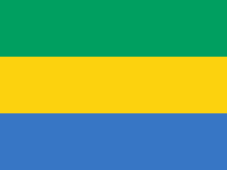


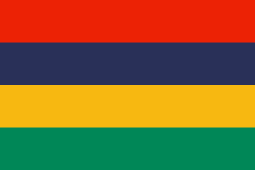

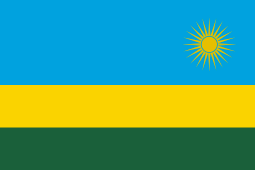


Americas
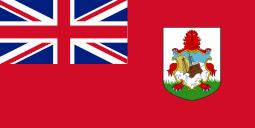

Asia








Europe





.svg.png)










































Oceania


Transitions in progress
Africa







Americas















Asia











Europe





Transitions not yet started
Africa

Americas

Asia


Europe



Transition progress unknown




.svg.png)
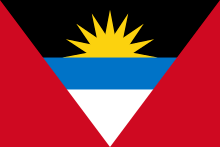


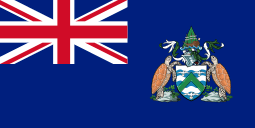

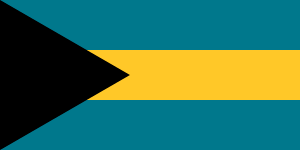



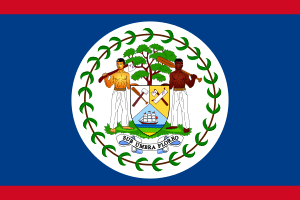
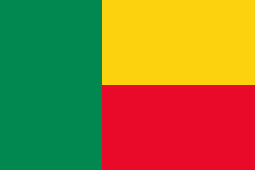
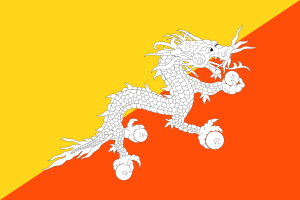

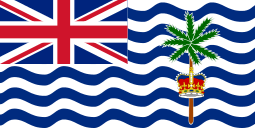

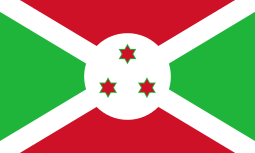








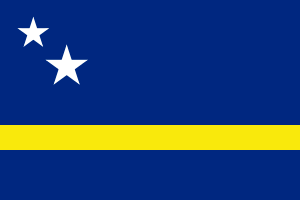

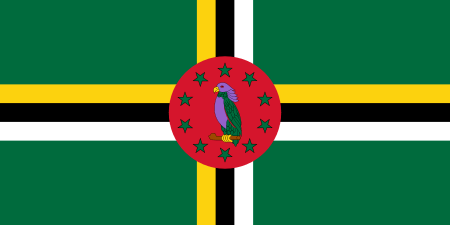




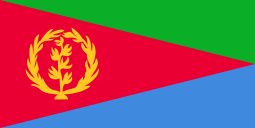


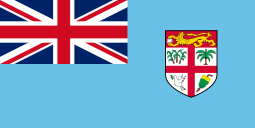

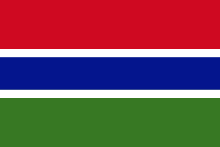
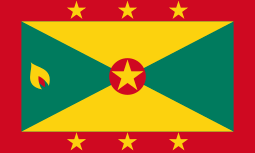
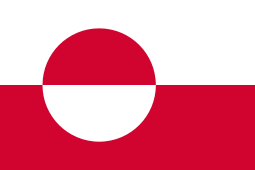
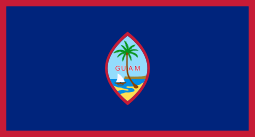

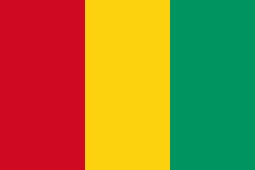

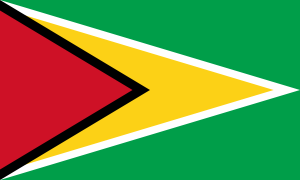




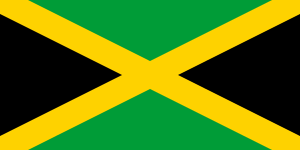


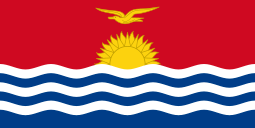
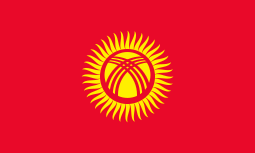



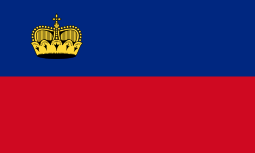


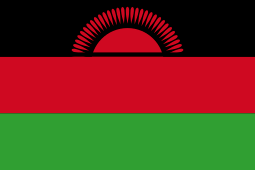
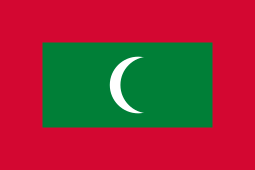


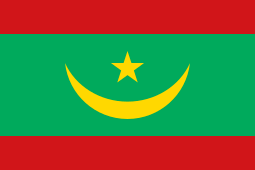




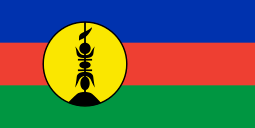




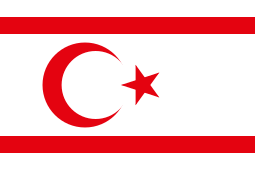
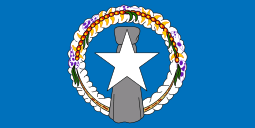


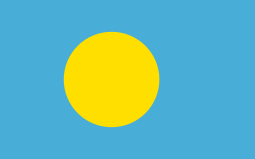


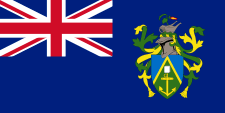
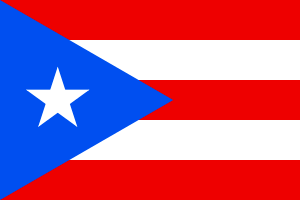
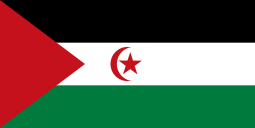
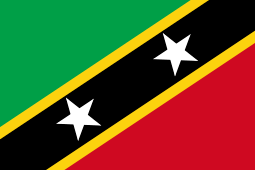
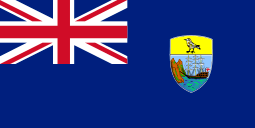
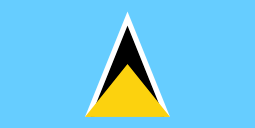

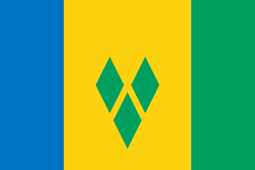



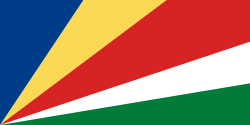


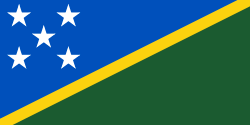

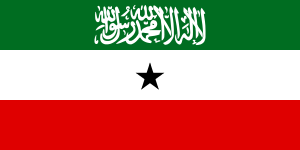
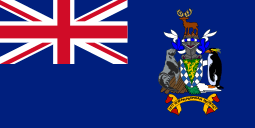
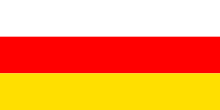
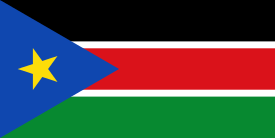


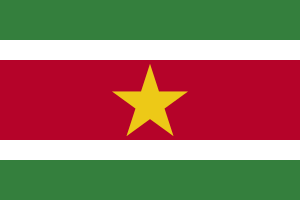
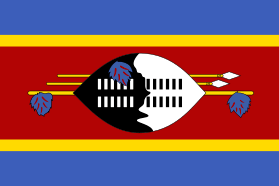




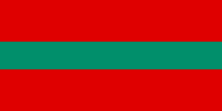


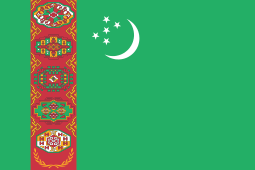

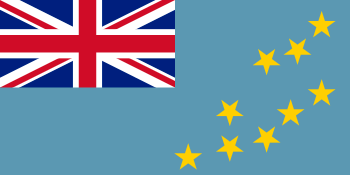






Digital-to-analog converters
After the switch from analog to digital broadcasts is complete, analog TVs will be incapable of receiving over-the-air broadcasts without the addition of a set-top converter box. Consequently, a digital converter box – an electronic device that connects to an analog television – must be used in order to allow the television to receive digital broadcasts.[138] In the United States, the government subsidized the purchase of such boxes for consumers via their coupon-eligible converter box program in 2009, funded by a small part of the billions of dollars brought in by a spectrum auction. The program was managed by the Department of Commerce through its National Telecommunications and Information Administration.
See also
References
- ↑ http://www.nbcnews.com/id/16154569/ns/technology_and_science-tech_and_gadgets/t/dutch-pull-plug-free-analog-tv/
- ↑ https://www.nytimes.com/2003/11/03/business/technology-german-way-to-go-digital-no-dawdling.html
- ↑ https://www.opensocietyfoundations.org/reports/mapping-digital-media-how-television-went-digital-netherlands
- ↑ http://news.bbc.co.uk/1/hi/business/1566785.stm
- ↑ "Roadmap for the transition from analog to digital terrestrial television broadcasting" (PDF). 2012.
- ↑ https://economie.hotnews.ro/stiri-telecom-22434659-exclusiv-romnii-fara-acces-televiziune-digitala-nu-mai-pot-receptiona-tvr1-1-mai-2018.htm
- 1 2 "Deadline for end of analogue TV broadcast extended to end-2018: IMDA". www.channelnewsasia.com. 6 November 2017.
- 1 2 http://www.indotel.gob.do/index.php/cgblog/2246/Ejecutivo-pospone-implementacion-de-television-digital
- 1 2 3 Cabuenas, Jon Viktor D. (2017-02-14). "Gov't wants analog TV switched off by 2023". GMA News Online.
- ↑ "DigiTAG Analog Switch Off Handbook" (PDF). 2008.
- ↑ "Official Journal of the European Union". eur-lex.europa.eu. 28 October 2009. Retrieved 13 January 2014.
- 1 2 "Digital TV Switchover Australia: Digital TV timetable by region". Australian Government Digital Switchover Taskforce. 26 October 2012. Retrieved 29 November 2012.
- ↑ Horbuz, Annabella (2017-09-12). "BOLIVIA TO SWITCH OFF ANALOGUE TV IN 2019". nextvnews.com. Retrieved 2017-12-10.
- ↑ "Transição para rádio e TV digitais começa em 2015 | INFO". Info.abril.com.br. Retrieved 13 January 2014.
- ↑ "RTB advice viewers to switch to digital broadcasting". Bornei Bulletin. 2017-08-02. Retrieved 2017-12-10.
- ↑ "Dobrodošli u digitalno doba! / Vijesti / Digitalna televizija / Aktualne teme / Aktualne teme i projekti / Vlada Republike Hrvatske - službeni web portal". Vlada.hr (in Croatian). Retrieved 1 August 2012.
- ↑ Porter, Wallace (2017-11-08). "Cuba could complete digital switchover by 2023". bnamericas.com. Retrieved 2017-12-10.
- ↑ "Analogové vysílání televize skončí v Česku 12. 2. 2012. Konečně vypíná i Nova". mediar.cz (in Czech). Retrieved 13 September 2012.
- ↑ "Page introuvable / Accueil" (PDF). CSA.fr (in French). Retrieved 1 August 2012.
- ↑ (in Hungarian)"A new era in the Hungarian television - Start of the residential phase of digital switchover". 11 March 2013.
- ↑ "Hungary set for digital switchover". Retrieved 20 March 2013.
- ↑ Hawkes, Rebecca (2017-02-02). "TRAI calls for India's analogue TV switch-off by end 2023". Rapid TV News. Retrieved 2017-12-10.
- 1 2 "Home - Going Digital". DigitalTelevision.ie. 4 June 2012. Retrieved 1 August 2012.
- ↑ "[Dpa] 社団法人 デジタル放送推進協会". Dpa.or.jp. 24 July 2011. Retrieved 1 August 2012.
- 1 2 "Posible, concluir apagón analógico en 2015: Cofetel" (in Spanish). El Economista. 3 June 2013. Retrieved 11 June 2013.
- ↑ Kyaw, Hsu Mon (2013-10-14). "MRTV Begins Digital TV Broadcasts, Expects to Reach Nationwide Coverage by 2020". The Irrawaddy. Retrieved 2017-12-10.
- ↑ "When is my area". Going Digital. Archived from the original on 17 October 2011. Retrieved 1 August 2012.
- ↑ http://www.tvr.ro/trecerea-completa-la-emisia-digital-terestra-a-tvr-este-legala_21922.html#view
- ↑ Batambuze III, Ephraim (2014-01-07). "Rwanda Sets July 31 for Analogue TV Switch-Off". pctechmag.com. Retrieved 2017-12-10.
- ↑ "Rwanda concludes analogue TV switch-off". africatelecomit.com. Retrieved 2017-12-10.
- ↑ Tham, Irene (2017-11-06). "Parliament: Analogue broadcasting to end by Jan 1, 2019; deadline extended as needy households not on board yet". The Straits Times. Retrieved 2017-12-10.
- ↑ "DVB-T je realitou už aj na Slovensku". Retrieved 28 December 2012.
- ↑ "Vypínanie vybraných analógových vysielačov". Retrieved 28 December 2012.
- ↑ "Éra analógového vysielania sa definitívne končí". Retrieved 28 December 2012.
- 1 2 McLeod, Duncan (3 February 2016). "Finally, digital TV era arrives in SA". TechCentral.co.za. Retrieved 18 September 2016.
- 1 2 Odendaal, Natasha (28 October 2016). "Analogue transmission switch-off starts in Northern Cape as South Africa progresses digital migration". Engineeringnews.co.za. Engineering News. Retrieved 23 February 2018.
- 1 2 van Zyl, Gareth (17 June 2015). "SA joins list of losers on digital migration". Fin24.com. Retrieved 7 March 2018.
- 1 2 Herman, Paul (23 January 2018). "Communications department needs R6.6bn to complete digital migration by 2019 deadline". News24.com. Retrieved 23 February 2018.
- ↑ Onda Digital inicia sus emisiones en pruebas El Mundo, 16 November 1999
- ↑ El "apagón analógico", dividido en cuatro fases, culminará finalmente el 3 de abril de 2010 Mundoplus, 7 September 2007
- ↑ Webfactory www.webfactory.ie. "Digital Video Broadcasting - Tunisia". DVB. Retrieved 1 August 2012.
- 1 2 "When". digitaluk.co.uk. 6 April 2011. Archived from the original on 8 September 2008. Retrieved 1 August 2012.
- ↑ P.R. China (19 July 2011). "FCC Sets Deadlines for LPTV, TV Translator and Class A Stations To Convert to Digital - And Gives Hints When Television Spectrum May Be Reclaimed for Broadband". Broadcast Law Blog. Retrieved 1 August 2012.
- ↑ http://apps.fcc.gov/ecfs/document/view?id=60000976623
- ↑ Forrester, Chris (2013-03-27). "Venezuela to switch off analogue in 2020". Retrieved 2017-12-09.
- ↑ "Vietnam continues switching off analogue TV signals in 15 provinces". 2017-08-15. Retrieved 2017-12-09.
- ↑ "News" (PDF). DVB. Retrieved 13 January 2014.
- ↑ La, Rédaction (2015-05-22). "Gabon: the migration to digital television costs 60 billion FCFA". Africa Top Success. Retrieved 2017-12-10.
- ↑ http://www.myjoyonline.com/news/2015/February-4th/tv-signals-to-go-digital-by-june-2015.php
- 1 2 3 http://www.theeastafrican.co.ke/news/Rwanda--Tanzania-lead-in-switchover-to-digital-TV/-/2558/2753624/-/koki2dz/-/index.html
- ↑ http://www.digitaltvafrica.com/?p=218
- ↑ http://www.vanguardngr.com/2015/06/nigerias-digital-migration-failure-lessons-from-tanzania/
- ↑ "Digital Television Migration". mibs.gov.sg. Retrieved 2017-12-10.
- ↑ http://www.dtvstatus.net/map/map.html
- ↑ "BBC's All-Digital TV Output Plans "On Course"". bernews.com. 2016-03-09. Retrieved 2017-12-10.
- ↑ "México avanza hacia el ''Apagón analógico'" (in Spanish). Generaccion.com. 3 September 2010. Retrieved 1 August 2012.
- ↑ "México posterga 'apagón analógico'" (in Spanish). Univision. 1 June 2013. Retrieved 11 June 2013.
- ↑ 岩手、宮城、福島の3県のアナログ放送は平成24年3月31日に終了しました [Analog broadcast ended in Iwate, Miyagi and Fukushima on 31 March 2012 (year Heisei 24)] (in Japanese). Tokyo: Ministry of Internal Affairs and Communications. 31 March 2012. Retrieved 1 April 2012.
- ↑ "Broadcasting Digitization Schedule". DPA: The Association for Promotion of Digital Broadcasting. Retrieved 16 November 2009.
- ↑ http://av.watch.impress.co.jp/docs/news/20150518_702438.html
- ↑ 경상북도 울진군, 오늘부터 '디지털 송출' 시작 (in Korean). sbs.co.kr. 20 January 2010. Retrieved 11 June 2013.
- ↑ "South Korea to continue analog TV near border". North Korea Tech. 27 December 2012. Retrieved 11 June 2013.
- ↑ "MCI's Addendum to the President's Address". Mci.gov.sg. Retrieved 21 January 2016.
- ↑ "Andorra fa el salt a la TDT" (in Catalan). Vilaweb.
- ↑ "DVB-T: Zeitplan". Digitales Fernsehen Förder GmbH. June 2008. Archived from the original on 2 July 2008. Retrieved 23 June 2008.
- ↑ "analog terrestrial TV switch-off in the EU - briefing — EUbusiness.com - EU Business News". Eubusiness.com. Retrieved 1 August 2012.
- ↑ "Azerbaijan to switch over to digital TV 'very soon'". News.Az. 27 September 2011. Retrieved 1 August 2012.
- ↑ "In 2013, Azerbaijan will fully switch to digital TV - Minister". News.Az. 3 December 2012. Retrieved 10 December 2012.
- ↑ http://dnes.dir.bg/news/televizia-tzifrovizatzia-izbori2013-tzifrov-signal-15122672?nt=4
- ↑ http://www.mportal.com.hr/Default.aspx?ref=news&cat=44&id=4563
- ↑ "Nyt TV-signal fejres med lysshow". TVTid på TV2. Retrieved 1 November 2009.
- ↑ "Ændringer i din tv-pakke". YouSee. Retrieved 14 December 2015.
- ↑ "Digi-tv esillä ympäri maata". Finnish Ministry of Communications. Retrieved 12 August 2007.
- ↑ https://www.entertaintv.de/magazin/inhalte/kabelfernsehen-analog-abschaltung
- ↑
- ↑ "Map coverage Broadcast Centres". Directorate General of Technology and Development.
- ↑ "Announcement". Digea. Dec 2014. Archived from the original on 6 February 2015.
ANNOUNCEMENT Saturday, December 27, 2014 the morning will begin digital broadcasting (while stopping analogue) of the centers: Agios Athanasios Water Tower Gate Tsotyli Vounasa Royal Polygyros Delvinaki Curse Granitsopoula Igoumenitsa Korfovouni Amfilochia Those viewers covered by these centers will need to have receiver (TV or decoder) that supports MPEG4 technology and coordinate the morning of December 27 the new frequencies. Those viewers already receive terrestrial digital TV signal need not make any action.
- ↑ "Digital Television". Icelandic National Broadcasting Service.
- ↑ "Turning off the analogue distribution". Icelandic National Broadcasting Service. 2 February 2015.
- ↑ "Watershed in Icelandic telecommunications history". Vodafone. 2 February 2015.
- ↑ "Digital switchover takes place". The Irish Times. 24 October 2012. Retrieved 24 October 2012.
- ↑ "analog Deflectors still in service until 31 December". boards.ie. Retrieved 13 January 2014.
- ↑ "Digitalization of all Macedonian televisions by 2013". Ministry of Information Society and Administration. 14 March 2012. Retrieved 15 March 2012.
- ↑ Webfactory http://www.webfactory.ie. "Digital Video Broadcasting - Malta". DVB. Retrieved 1 August 2012.
- ↑ "Montenegro shuts down the analogue signal". CDM.
- ↑ http://www.nbcnews.com/id/16154569/ns/technology_and_science-tech_and_gadgets/t/dutch-pull-plug-free-analog-tv/
- ↑ "Ziggo stopt met analoge tv en gaat volledig digitaal". NOS (in Dutch). 8 March 2018. Archived from the original on 8 March 2018. Retrieved 29 March 2018.
- ↑ "Norway completes ASO". BroadbandTVNews.com.
- ↑ "750 mil clientes NOS com TV sem box terão acesso a 110 canais sem mais custos". Dinheiro Vivo (in Portuguese). 2017-10-10. Retrieved 2018-07-31.
- ↑ http://www.tvr.ro/trecerea-completa-la-emisia-digital-terestra-a-tvr-este-legala_21922.html#view
- ↑ "Pilot mreža". JP Emisiona tehnika i veze. Retrieved 24 June 2013.
- ↑ . RTS http://www.rts.rs/page/rts/sr/Digitalizacija/story/2002/Srbija/1888083/Vršac+na+dan+od+digitalizacije.html. Retrieved 14 April 2015. Missing or empty
|title=(help) - ↑ (in Spanish) Disposición adicional primera del Real Decreto 944/2005, de 29 de julio, published in BOE del 30 de julio
- ↑ "Sista analoga TV-nätet släckt" (in Swedish). Sydsvenskan. 15 October 2007. Retrieved 18 July 2015.
- ↑ https://www.blick.ch/news/wirtschaft/analog-tv-noch-bis-2017-preisueberwacher-haelt-analoges-tv-am-leben-id2147549.html
- ↑ "First digital TV switch date set". BBC News. 15 March 2007. Retrieved 24 April 2007.
- ↑ "Northern Ireland". digitaluk.co.uk. Retrieved 1 August 2012.
- ↑ "Douglas transmitter group (Border region) – Arqiva confirms completion of Digital Switch Over" (Press release). arqiva.
- ↑ "When is my area going digital? - Going Digital". New Zealand Ministry for Culture and Heritage. Archived from the original on 17 October 2011. Retrieved 17 July 2011.
- ↑ http://www.mmegi.bw/index.php?sid=1&aid=368&dir=2013/april/Monday8
- ↑ http://www.tvtechnology.com/news/0002/gatesair-wins-ethiopia-tv-transition-project/278114
- ↑ Only Al Aoula is available with very low power analog transmitters.
- ↑ "Switching from analogue to digital television".
- ↑ "TNT, comment ça marche". L'Economiste (in French). 2015-06-19. Retrieved 2018-05-05.
- ↑ http://www.ngrguardiannews.com/2015/05/startimes-keen-on-nigerias-digital-television-future/
- ↑ Cassia, Fernando (2 December 2007). "Brazil starts HDTV transmissions". The Enquirer. p. 1. Retrieved 3 December 2007.
- ↑ "Conheça os planos das emissoras para a TV digital" (in Portuguese). G1. 13 November 2007. p. 1. Retrieved 19 November 2007.
- ↑ Cronograma de desligamento da TV analógica no Brasil Teleco. Accessed on 15 July 2014.
- ↑ "2015 Same Strategy, Different Path". Cbc.radio-canada.ca. 4 April 2012. Retrieved 1 August 2012.
- ↑ Digital Television (DTV) Transition Schedule - Updated April 2017 - Industry Canada
- ↑ Granma, Las cajas decodificadoras y el apagón analógico, 17 December 2014
- ↑ https://globalvoices.org/2010/10/05/dominican-republic-digital-tv-in-2015/
- ↑ El Diario de Hoy, El Salvador prepara el salto a la TV Digital, 11 July 2010
- ↑ http://laestrella.com.pa/panama/nacional/ordenan-comercios-panamenos-vender-solo-televisores-senal-digital/24040519
- ↑ http://laestrella.com.pa/panama/nacional/apagon-analogico-podria-2018/24021997
- ↑ Borja, Flavia (22 February 2016). "Apagón analógico: cómo prepararse para el 2020". ABC.com.py (in Spanish). Retrieved 12 February 2018.
- ↑ Archived 24 September 2008 at the Wayback Machine.
- ↑ "Suspension of Sept. 1, 2015 Digital Transition Date for LPTV/Translator". Federal Communications Commission. 24 April 2015. Retrieved 2 May 2015.
- ↑ Post-Auction Rules and Procedures for LPTV and TV Translator Stations Wiley Rein LLP, 17 May 2017
- ↑ "News". DVB. Retrieved 13 January 2014.
- ↑ "Digital TV". Government of Hong Kong. Retrieved 4 June 2007.
- ↑ "analog television switch-off working target deferred to end 2015". Government of Hong Kong. Retrieved 23 June 2011.
- ↑ "تلویزیون دیجیتال - 40 درصد از جمعيت كشور تحت پوشش سامانه تلويزيون ديجيتال قرار دارند - صفحه اصلی". Portal.irib.ir. Archived from the original on 25 September 2011. Retrieved 1 August 2012.
- ↑ "تلویزیون دیجیتال - مشروح مصاحبه دکتر علیعسکری، معاون توسعه و فناوری رسانه، در برنامه پارک ملت (پنجشنبه 13 مرداد 1390) - صفحه اصلی". Portal.irib.ir. Archived from the original on 25 April 2012. Retrieved 1 August 2012.
- ↑ "تلویزیون دیجیتال - تهیه طرح جامع گذار از آنالوگ به دیجیتال در رسانه ملی - صفحه اصلی". Portal.irib.ir. Archived from the original on 25 April 2012. Retrieved 1 August 2012.
- ↑ "www.digitalnewsasia.com/digital-economy/syed-mokhtar-company-wins-digital-terrestial-tv-tender".
- ↑ "Philippines to start digital TV shift in 2019". NexTV Asia-Pacific. Retrieved 27 October 2014.
- ↑ Delos Reyes, Dyan (14 February 2017). "Light Network, nasa Digital TV na!". Light Network Website. Retrieved 28 February 2017.
- ↑ "Vietnam continues switching off analogue TV signals in 15 provinces". 2017-08-15. Retrieved 2017-12-09.
- ↑
- ↑ http://www.biztechafrica.com/article/digital-migration-togo-trains-300-tv-technicians-a/9701/#.VuA-NCgrLDd
- ↑ https://www.reuters.com/article/idUS167953+06-Sep-2012+BW20120906
- ↑ KCTV launches HD satellite broadcasts North Korean Tech (www.northkoreantech.org). 19 January 2015. Retrieved on 6 June 2015.
- ↑ KCTV’s slow move to high-definition, what’s taking so long? North Korean Tech (www.northkoreantech.org). 15 May 2015. Retrieved on 6 June 2015.
- ↑ https://technology.ihs.com/498702/turkey-likely-to-miss-analogue-switch-off-target-after-court-decision
- ↑ https://tech.ebu.ch/news/2016/10/new-hope-for-dtt-in-turkey
- ↑ https://technology.ihs.com/593619/the-outlook-for-digital-terrestrial-television-in-turkey
- ↑ "What is a set-top converter box?". Digital TV Facts. 2007. Retrieved 23 March 2008. (dead link)
Further reading
- Hart, Jeffrey A. (2004). Television, technology, and competition : HDTV and digital TV in the United States, Western Europe, and Japan (PDF). New York: Cambridge University Press. ISBN 0-521-82624-1.
External links
| Wikinews has related news: Finnish terrestrial analog TV network shut down |
| Wikinews has related news: Denmark holds nationwide light show to mark digital switchover |